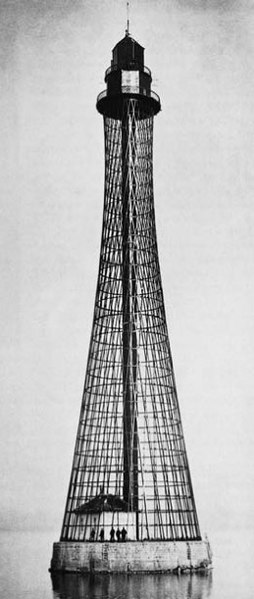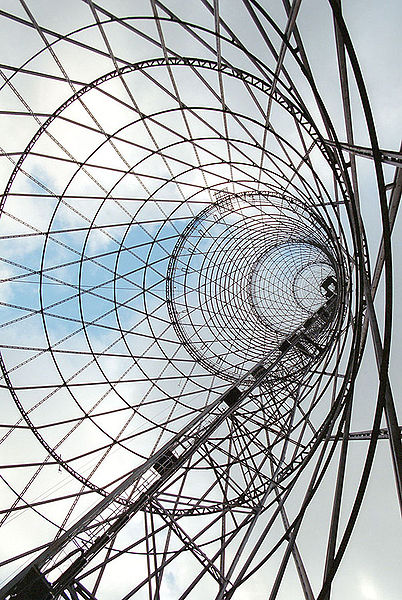Vladimir Grigoryevich Shukhov was a Russian and Soviet engineer-polymath, scientist and architect renowned for his pioneering works on new methods of analysis for structural engineering that led to breakthroughs in industrial design of the world's first hyperboloid structures, diagrid shell structures, tensile structures, gridshell structures, oil reservoirs, pipelines, boilers, ships and barges. He is also the inventor of the first cracking method.
Shukhov, 1891
Refinery using the Shukhov cracking process, Baku, USSR, 1932
The world's first diagrid hyperboloid structure by Shukhov, Nizhny Novgorod, 1896
The world's first double curvature steel diagrid by Shukhov (during construction), Vyksa near Nizhny Novgorod, 1897.
Hyperboloid structures are architectural structures designed using a hyperboloid in one sheet. Often these are tall structures, such as towers, where the hyperboloid geometry's structural strength is used to support an object high above the ground. Hyperboloid geometry is often used for decorative effect as well as structural economy. The first hyperboloid structures were built by Russian engineer Vladimir Shukhov (1853–1939), including the Shukhov Tower in Polibino, Dankovsky District, Lipetsk Oblast, Russia.
Shukhov Tower, a lattice 37-meter water tower by Vladimir Shukhov. All-Russian Exposition, Nizhny Novgorod, Russia, 1896
Hyperboloid lattice Adziogol Lighthouse by V.G. Shukhov near Kherson, Ukraine, 1911
The gridshell of Shukhov Tower in Moscow.
Hyperboloid tower in Kōbe, Japan.







